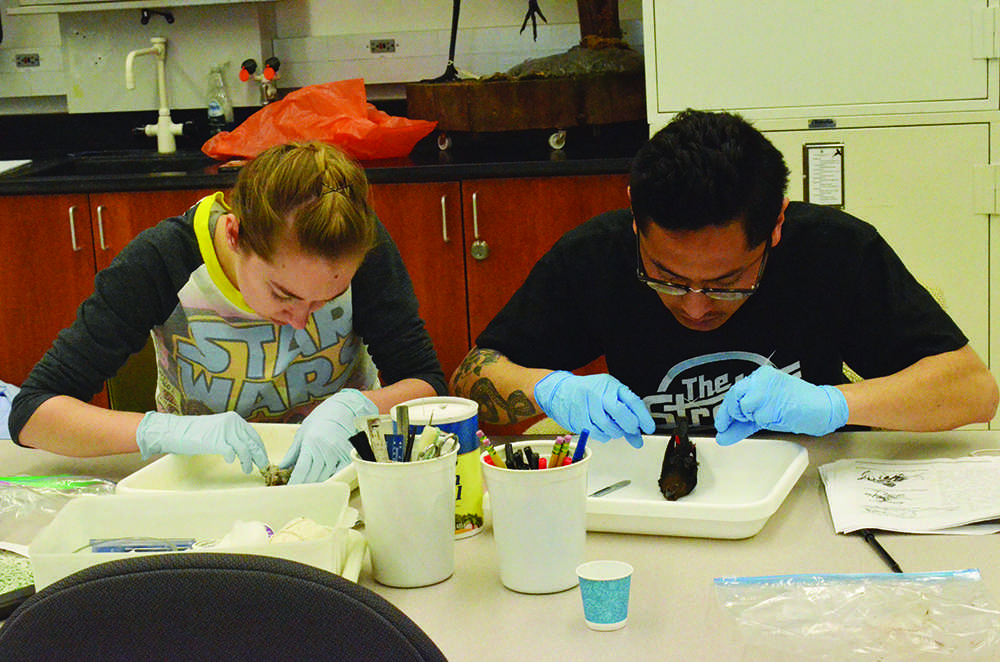Perhaps the most striking feature of NMU’s Zoology Museum in New Science is the flying goose looming over the sink on the left, the high population of furry
taxidermied woodland animals lying on top of the off-white tables spread around the room, or the fish across the room preserved in colorful, liquid-filled jars.
Established in 1974 by biology professor John Kirwin Werner, the museum houses over 2,000 vertebrate species and tens of thousands of invertebrate species—all for undergraduate and graduate students to improve their scientific understanding of the world around them, said John Rebers, Ph.D., biology department head and professor.
“Students are going through and constantly adding new items to the collections, and getting the specimens ready to be added helps them understand the process that’s needed. It also allows them to do active research,” Rebers said.
After Werner retired, biology professor and mammal curator Kurt Galbreath arrived in 2011, and no one had taken on the museum. Galbreath said there was an opportunity for him to have a positive impact on the museum. Since he got involved with the museum, and thanks to the help of other professors of the department, cabinets have been both replaced and increased in number. And an online database was created for the specimens in the museum so other colleges could access the collection.
The museum has specimens from the ’50s and ’60s up to the present, but the oldest mammal in the collection dates back to 1918. These collections show the environment is being impacted by what humans are doing, Galbreath said, adding he can’t, for example, access places that he could years ago due to the high amounts of construction in places that were originally wildlife areas.
“We don’t have a time machine that allows us to go back in time and resample those places,” he said. “The only hope we have of being able to directly observe biological change through time is by archiving specimens from a particular time point and then being able to compare those specimens to whatever comes in the future.”
Specimens in the museum come from all around—community members donate animals, the DNR donates wolf skulls, birds come from hitting windows, some mammals
come from roadkill and animals are also actively collected in the field. Specimens with meat remains are put in a container with bugs to remove it.
There’s a strong moral imperative to collect as much data as possible from the trapped specimens, so no one has to go and “harass” local wildlife again for a long period of time, Galbreath said.
“That’s not something that can be done lightly,” he said. “[We’re] always working in the realm of what is ecologically sound so we’re not having a negative impact on the ecosystem.”
It’s great to take classes and get good grades, Galbreath said, but students who want to set themselves apart from their peers need to have deeper experience working with research theses and having hands-on experiences.
“The opportunity for students to actually handle specimens in lab as opposed to learning about them in concept by watching videos or reading a book is powerful,” Galbreath said. “When a student is holding a three-dimensional object and really looking and thinking of the biology of that organism, it just drives it home.”
For senior biology major and museum curator Maddie Arszulowicz, the museum has given her a deeper appreciation for animals and she wants to pursue museum studies as a full-time career—something she never expected to happen during her time in college, she said.
“It’s another thing when you can hold an animal face-to-face and notice all the little details,” Arszulowicz said.
Many students come into the museum to work on the animals and relax, she said. During finals week, there’s an influx of students who come in and prepare specimens.
“This museum is a great opportunity,” Arszulowicz said. “There’s so many universities that don’t have resources like this.”

























